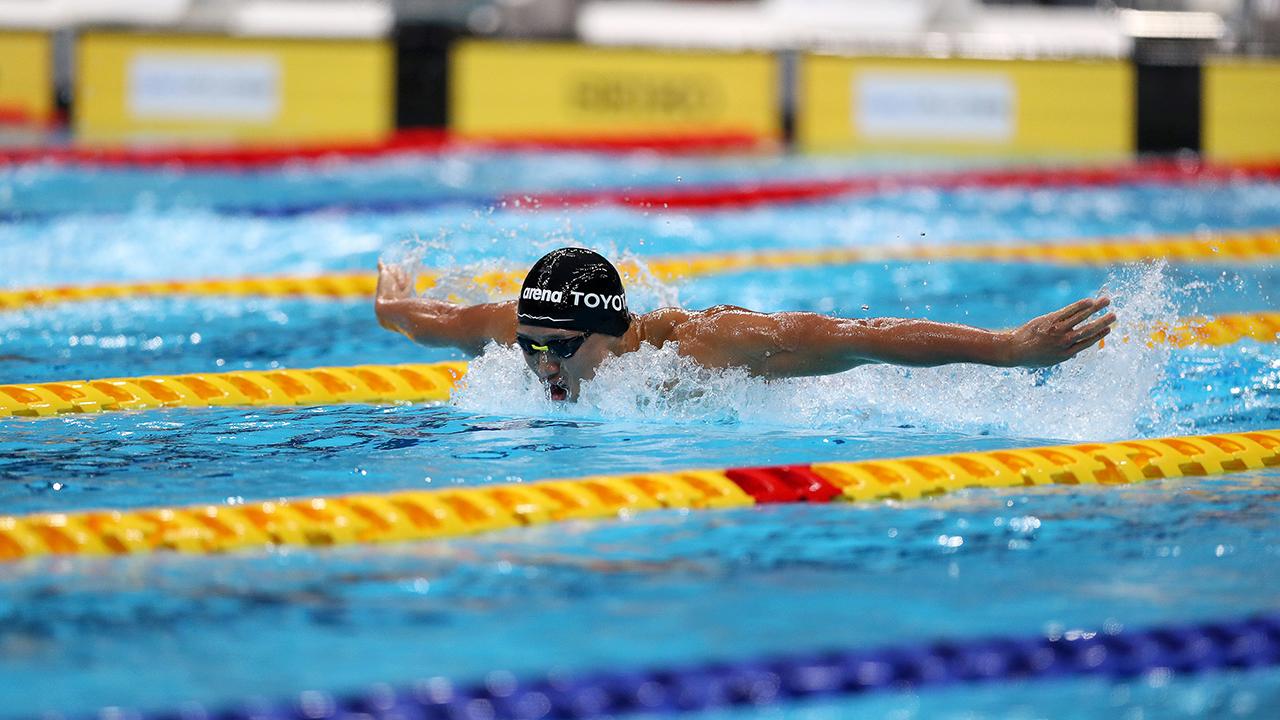
Learn athletes' challenges in competing with world-class rivals, with the support and expectation from people around them. The first in the series features Butterfly swimmer Takeshi Kawamoto.

Athletes stand on the podium with the crowd cheering and cameras flashing. But they don’t make that happen just by themselves. Various people, from coaches, friends, colleagues, rivals, to families provide support with them, and behind a success or struggle, there are many different stories for each athlete. This athlete series highlights what enables athletes to take on the challenges.

Aquatics athletes don’t swim alone
On February 7, 2021, competitive swimmer Takeshi Kawamoto, who participated in the Men's 100m Butterfly in the 2021 Japan Open, beat his personal best for the first time in five years. He won with a stunning time of 51.28 seconds, breaking the standard Olympic dispatch record.
Kawamoto stood in the center of the podium at the Tokyo Aquatics Center, where the Olympic Games Tokyo 2020 will be held, and vowed to improve his time before the Tokyo 2020 Games.
Silence takes over underwater, away from the outside world. The crowd’s cheers seem so far away during the race. However, swimmers are not swimming by themselves. Kawamoto said, “I am deeply grateful to the people I have met. They allowed me to keep swimming up until now and made it possible for me to pursue the Olympic Games.”
Kawamoto
Currently, I am training together with Junya Hasegawa, Yuma Edo, Akira Nanba and Ai Soma under the mentorship of Coach Yuichiro Sasaki.
For example, Soma is a female athlete who has aimed to represent Japan, but it inspires me to see how hard she trains, without cutting any corners. I am very thankful of my current environment, where I have other athletes beside me who inspire and motivate me to work harder. It isn’t easy to find such an environment.
His reflection about his life in swimming makes one feel that the keywords here are “getting inspired while competing with other athlete friends and rivals.”
He was encouraged to start swimming when he was 3 years old by his brother, who was 5 years older than him. He started going to the swimming school ten minutes’ walk from his home and made some friends there.
Kawamoto
When I was little, my feelings of not wanting to lose to my classmates was stronger than my desire to chase after my brother. There were no competitions at that point yet, but kids who could swim well would advance to a higher class. I remember picking someone to compete against as a sort of motivation. I thought I must not lose to him.

When Kawamoto became an elementary school student and started competing, he continued to improve his record with the support of his parents, who always accompanied him to the venues and took videos.
He went to a high school and college which had competitive swimming teams. He kept improving his skills, but he didn’t focus on the butterfly until he became a college student. In the end, his natural competitive mind made him choose the butterfly.
Kawamoto
Actually, I didn’t practice the butterfly seriously until I was a junior in college. I had practiced it before, but didn’t really like it because it was exhausting (laughs). Even though I wasn’t practicing much, I still made good time when I competed.
Compared to other swimming styles, my time [for the butterfly] was closer to world records, so I thought I could compete on the world stage, and that’s why I started to work on the butterfly more seriously. If I’m going to do something, I want to be the best at it.

Being inspired by gold medalists
After he decided to focus on the butterfly, Kawamoto began to shine, but also started thinking about his post-college career.
Kawamoto
I was born and raised in Aichi Prefecture, so I was well aware of Toyota’s efforts to revitalize the region. I recently had an opportunity to teach swimming locally, and thought that joining Toyota would allow me to be close and active in my hometown.
Another reason I chose Toyota was because my maternal grandfather worked for Toyota. I respected him as a person because he had simple needs and was sincere about everything he did. I think the Toyota way of thinking inspired him to be like that.
After Kawamoto joined Toyota in 2017, he had a serendipitous encounter in the summer of 2019. He had the chance to practice with Joseph Schooling, who had won the gold medal for Singapore in the Men's 100m Butterfly at the Olympic Games Rio 2016.
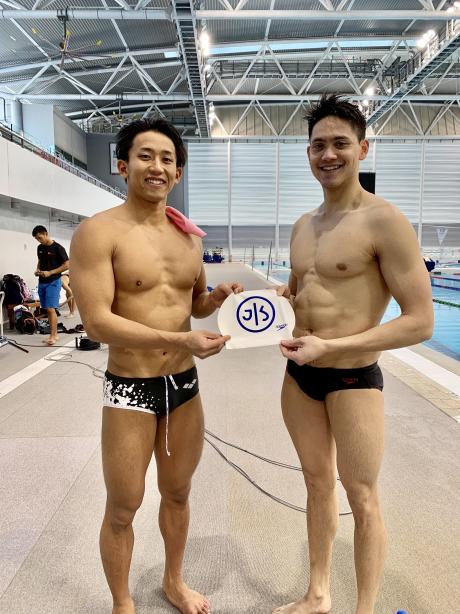
The gold medal that Joseph won at Rio 2016 was Singapore’s first Olympic gold medal. Also, Joseph became a hero in Singapore by accomplishing this splendid feat by beating Michael Phelps, who was a superstar in the world of Men’s Aquatics.
Kawamoto was able to participate in the practice because Joseph and Toyota had partnered up on a social innovation activity to reduce traffic accidents.
Kawamoto
I of course looked up to Joseph, but I don’t think he knew who I was (laughs). However, he noticed me when we swam together, probably because I was unexpectedly fast. He is about 10cm taller than me, but I suppose he was curious about how I could swim so fast being only 174cm tall. I think we were able to build a great relationship because we inspired each other and both had big aspirations.
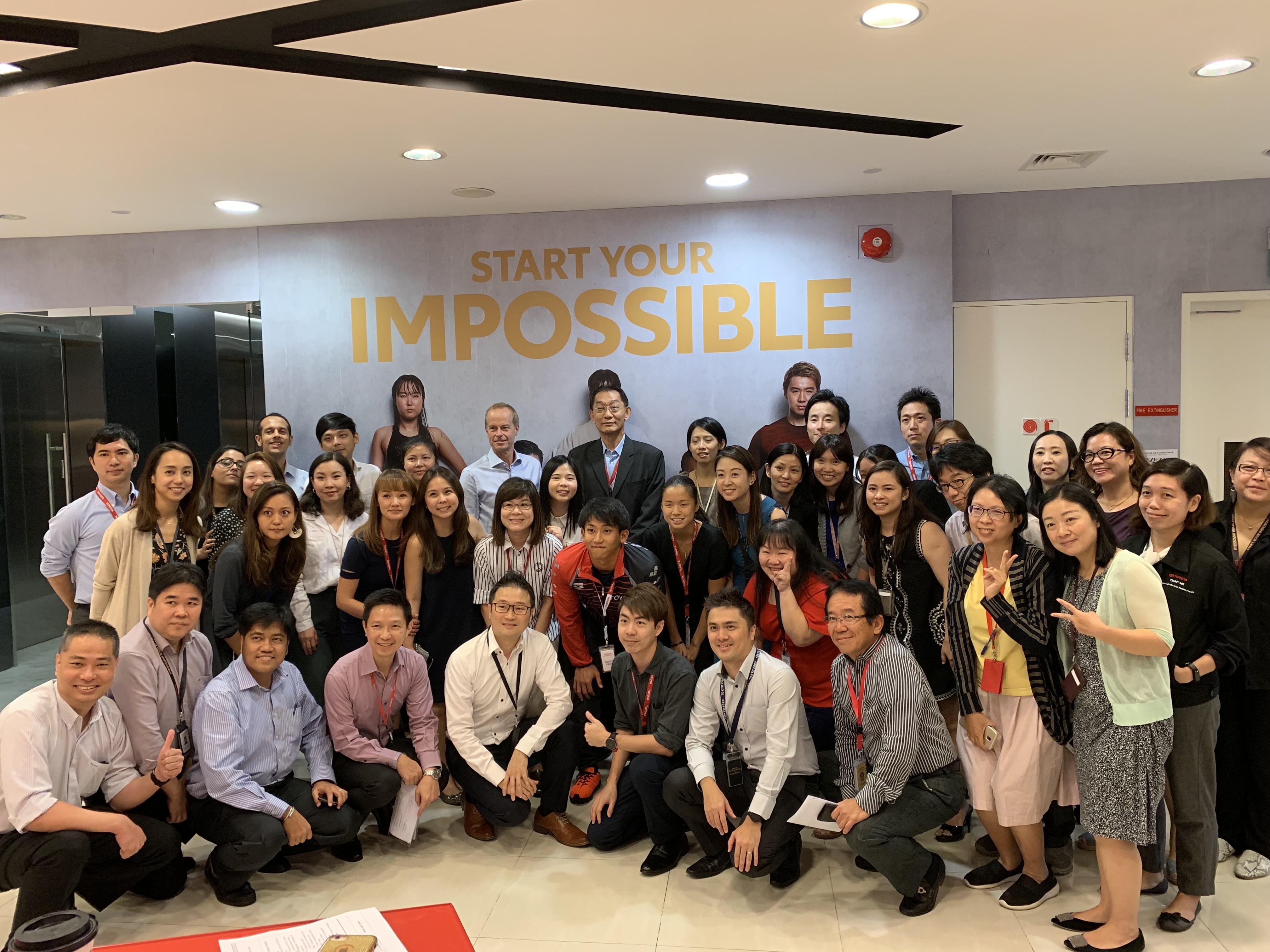
Kawamoto’s competitive life, which started with a friendly competition with his toddler rivals eventually reached the point of chasing a gold medalist in the next lane over.
Then how does Kawamoto, who doesn’t have the ideal physique from a global perspective, explain why he can swim 100m in 51 seconds?
Kawamoto
My advantage is the kick. I think my legs are the ones to beat when it comes to the butterfly dolphin kicks, not only in Japan but also in the world. It may be because I have always stretched a lot since I was a kid, so my ankles became more and more flexible.
Thanks to that, even though I was already naturally muscular to begin with, I was able to make my dolphin kicks even stronger as I gained more muscle. I think the propulsion of the dolphin kick helps me swim faster.
What he learned through global competition
Inspiring encounters with colleagues continued.
The Japanese team joined the International Swimming League (ISL) in 2020. The ISL, which started in 2019, is a team competition in which teams compete against each other, and is also called the “Swimming Club World Championship.”
Kosuke Kitajima leads the Japanese TOKYO FROG KINGS team and in addition to Kawamoto, Olympic medalists including Kosuke Hagino, Ryosuke Irie and other Olympians representing Russia and Brazil have also joined the team.
Kawamoto
Since it was a Japanese team, I thought it would feel similar to the world championships, but the team had a completely different vibe because of the few athletes from overseas. The official language of the team became English. It was refreshing to see how athletes and coaches from abroad think and act differently towards the games.
We competed after being in the same environment for a month, and that made me realize how big the world was. Due to the COVID-19 pandemic, ISL took place in an environment isolated from the outside world, which inevitably meant that I had to spend more time with those athletes, but that became a great experience in the end.”
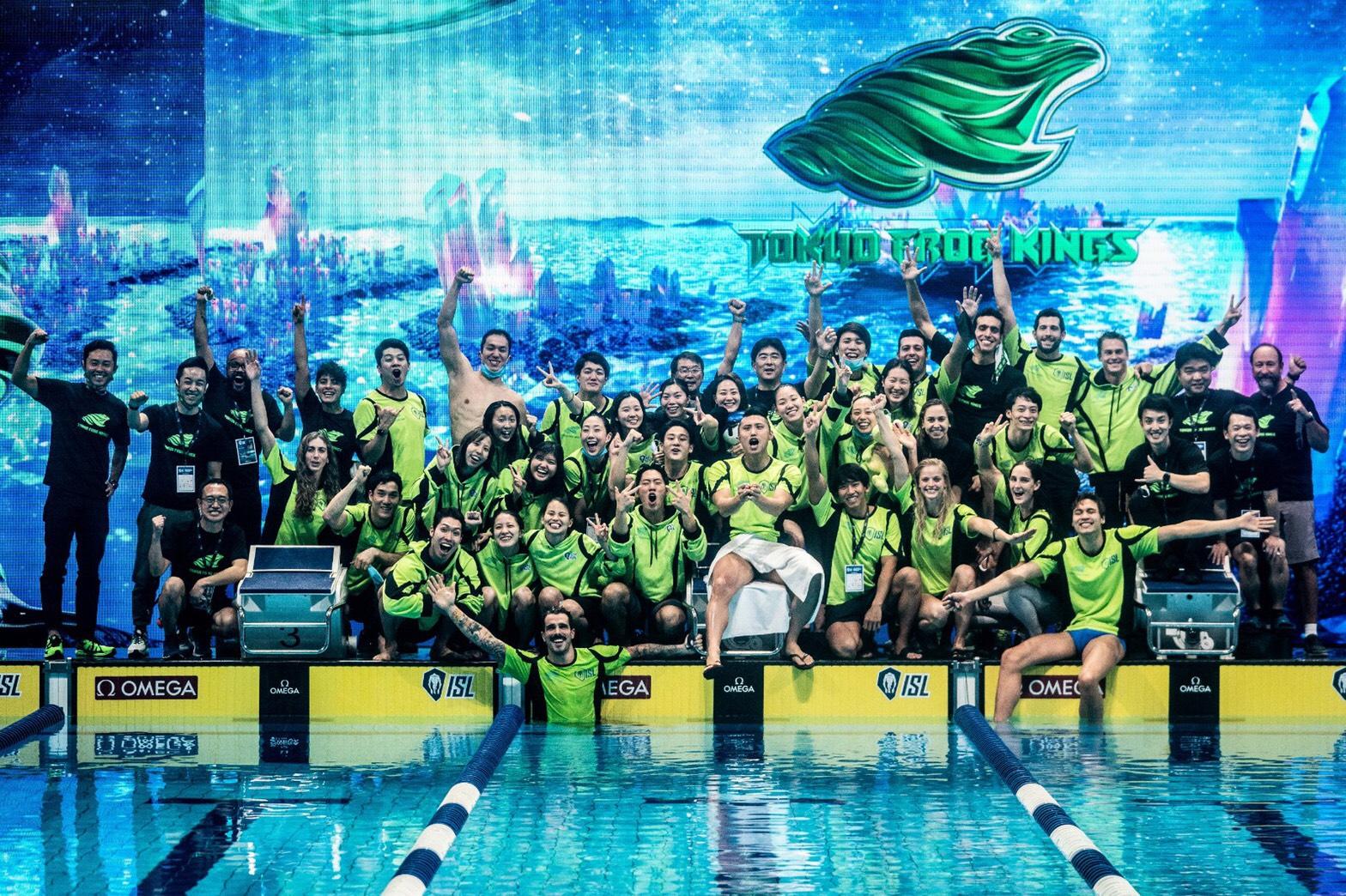
The friendly rivalry between him and other athletes got them through the otherwise bleak year of 2020, and allowed them to finish with a great record in 2021.
Actually, I had a baby in April 2020. Since we were under a lockdown, I was able to spend more time with my family, and that made me want to try my best for them. So, I’d like to think positively and believe the postponement of the Tokyo 2020 Games was not a bad thing.
Kawamoto is steadily preparing for the summer of 2021. When we asked why he was able to set his personal best for the first time in five years, he gave us the following answer.
Kawamoto
I achieved my personal best time during my senior year in college five years ago, but I had no idea how I did that. Now I understand how I did it because at the time, I was in the process of pursuing my ideal swimming style by making detailed adjustments to my techniques.
Additionally, he said that reevaluating his weight training routine by doing his own research was effective.
I think we associate weight training with lifting heavy barbells. However, after researching how players from New Zealand’s All Black are able to move their huge bodies so quickly, I incorporated a routine that involves quickly repeating the same stretch many times using lighter weights with weight training devices combined with a tool to measure velocity.
He said, “It’s Coach (Yuichiro) Sasaki’s influence” regarding his efforts to customize his own training methods.
Kawamoto
Coach Sasaki ultimately wants all the athletes to be self-reliant. Of course, close communication is a must, but I want to be self-sufficient when it comes to my own swimming techniques or anything instinctual.
On the other hand, I rely on the coach’s guidance when it comes to effective training physiologically. This habit of thinking for myself extends beyond my swimming career and is also meaningful in my life.
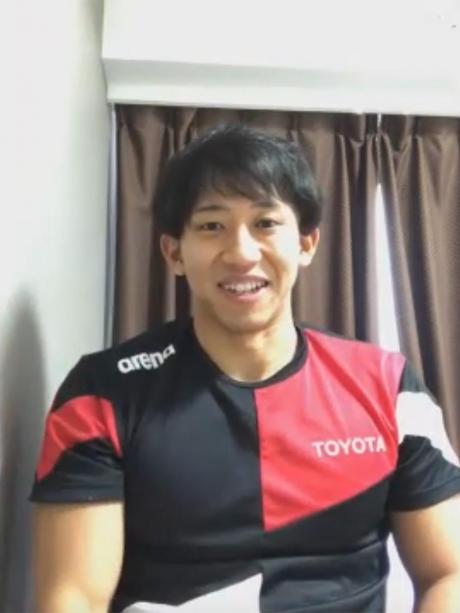
Overcoming a setback during his first year at Toyota
Lastly, we asked Kawamoto how he feels about his second career after he retires from competition.
It’s also the reason why I wanted to work for Toyota; I’d like to contribute to the well-being of society and the local communities. Being an athlete has allowed me to travel around the world and meet world-class athletes.
I have been able to have both global and local experiences through Toyota, so I’d like to seek opportunities to share that in the future.
Kawamoto actually experienced a minor setback during his first year at Toyota.
Kawamoto
Japan Swim was held in my hometown in Aichi, but I did really terribly. My boss had some harsh words for me, but has also continued to strongly support me to this day.
The other day, my division made me a surprise video to encourage me before a big competition, and that gave me the strength to fight hard. I want to keep working hard and give back in some way to the many people who have supported me.
Like he said, Kawamoto isn’t swimming alone. Friendly rivalry stimulates him to grow, and the support around him helps him face the world. Eventually he will bring those experiences back home. Kawamoto swims inside a circle of happiness.
(Text: Takeshi Sato)
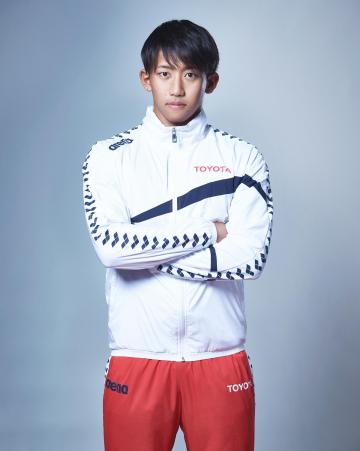
Takeshi Kawamoto
(Swimming / Butterfly)
Born 1995 in Aichi Prefecture. Began swimming at age 5 and won the Japan National Junior High School Swimming Competition when he was in 9th grade. He went to Toyokawa High School in Aichi Prefecture and won inter-high school competitions when he was in 11th and 12th grade.
He entered Chukyo University and competed in the FINA World Championships representing Japan during his junior year. He did not make it to Olympic Games Rio 2016, but he competed in and won an intercollegiate event in the same year, finishing with a record equivalent to the 6th place in Rio 2016.
He joined Toyota after graduating college. His hobbies are listening to music and dancing.

